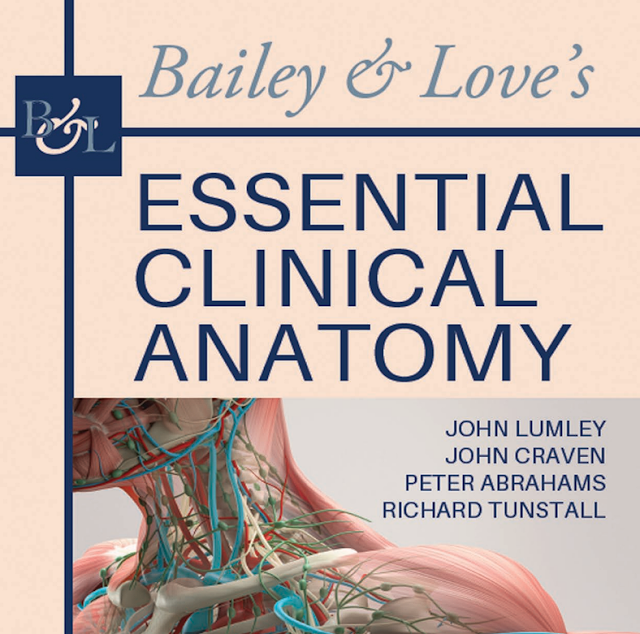Essential Clinical Anatomy - Bailey & Love
Preface
The expansion and integration of disciplines within the med- ical curriculum has reduced time for anatomy teaching, par- ticularly for human dissection, but has not reduced its vital importance. While surgeons need to know the detailed anat- omy in their operating field, knowledge of the anatomy that underlies every clinical examination and every radiological/ medical image is an essential component of everyday clinical practice.
This text provides a comprehensive cover of most normal and abnormal living anatomy, essential for students across the world. It addresses the knowledge and skills laid down by the General Medical Council (GMC) and the Ameri- can Association of Clinical Anatomists (AACA; ‘A clini- cal anatomy curriculum for the medical student of the 21st century: gross anatomy’, Clinical Anatomy 1996;9:71–99; see also Smith et al., ‘The Anatomical Society core regional anat- omy syllabus for undergraduate medicine’, Journal of Anatomy 2016;228:15–23).
The regional approach followed corresponds to a typical clinical examination. The nervous system is included, rather than being covered in an additional text; also included is embryology in sufficient detail to explain many common con- genital abnormalities. Wherever possible, information, such as muscle attachments, is tabulated and clinical information is highlighted.
The extensive number of illustrations include surface anat- omy, coloured labelled diagrams, dissections, a wide range of radiological, laparoscopic and endoscopic images, and clinical pictures of common diseases. A comprehensive index facili- tates rapid location of the desired passages. Self-assessment material is included at the end of each chapter; these multiple choice questions (MCQs), single best answer (SBA) ques- tions (used in the USA and also now more widely), extended matching questions (EMQs) and applied questions reflect styles of examination around the world.
The answers and explanations can be found in the text, but additional material is included where appropriate. The authors bring a combined experience of over 150 years of anatomy teaching at all levels, and present this large volume of information in a palatable, interesting and under- standable form, emphasizing its relevance to disease and clin- ical practice.
Books Contents
Preface vii
Acknowledgements viii
INTRODUCTION
The structure of the body – the systems
and organs 2
PART 1: THE THORAX
- 1 The thoracic wall and diaphragm 22
- 2 The thoracic cavity 35
- 3 The mediastinal structures 54
- 4 The pleura and lungs 63
PART 2: THE ABDOMEN
- 5 The abdominal wall and peritoneum 80
- 6 The abdominal alimentary tract 94
- 7 The liver, spleen and pancreas 113
- 8 The kidneys and posterior abdominal wall 123
- 9 The pelvis 136
- 10 The perineum 153
PART 3: THE BACK
- 11 The vertebral column and spinal cord 172
PART 4: THE UPPER LIMB
- 12 The shoulder region 186
- 13 The elbow and forearm 209
- 14 The wrist and hand 227
PART 5: THE LOWER LIMB
- 15 The hip and thigh 242
- 16 The knee, leg and dorsum of the foot 266
- 17 The foot 288
PART 5: THE HEAD AND NECK
- 18 The skull, scalp and face 302
- 19 The orbit, nose and mouth 315
- 20 The temporomandibular joint, pharynx and larynx 339
- 21 The ear, intracranial region and cranial nerves 355
- 22 The neck 371
- 23 Vessels, nerves and lymphatic drainage 387
- 24 Neuroanatomy 400
- 25 The ventricular system, the meninges and blood supply of the cranial cavity 429







No comments:
Post a Comment